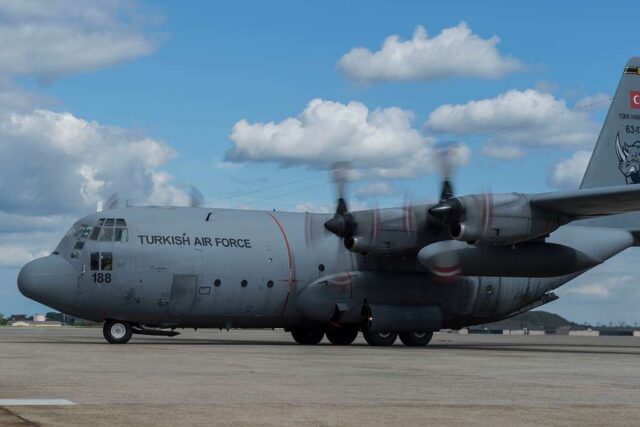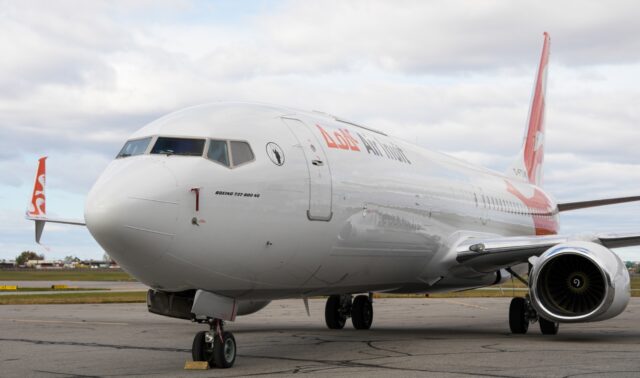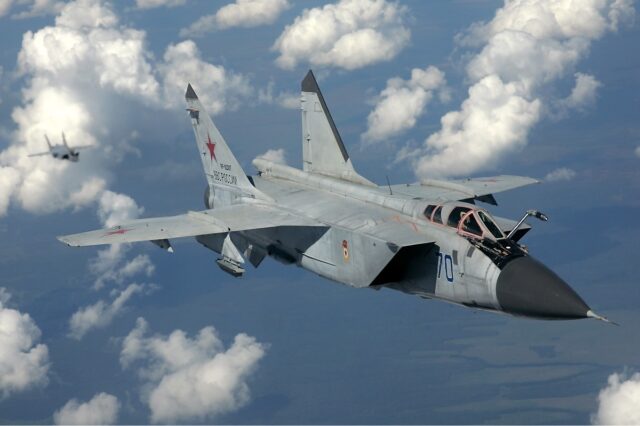Russia’s hybrid war: NATO faces tough choices on airspace incursions

September 26, 2025

On 25 September 2025, the United States scrambled four F-16 fighter jets, four KC-135 tankers, and an E-3 Sentry airborne early warning aircraft to intercept two Russian Tu-95 strategic bombers and two Su-35 fighter jets operating inside the Alaska Air Defense Identification Zone (ADIZ).
The interception came as President Donald Trump urged NATO to “shoot down Russian jets violating its airspace,” against the backdrop of what many officials describe as an intensifying Russian hybrid campaign against NATO.
Russia’s escalating violation of NATO airspace
Russian aircraft have repeatedly tested NATO airspace boundaries in recent years. Crewed fighters have entered the skies over Sweden, Norway, and Estonia, while drones have violated the airspace of Poland, Romania, and Lithuania.

One of the most serious incidents occurred a week ago, when three armed MiG-31s penetrated Estonian airspace for more than 12 minutes. Italian F-35s were dispatched to intercept. Norway has separately reported that Russian military aircraft have breached its airspace three times so far in 2025.
Sweden, which formally joined NATO in March 2024, experienced its first violation just months later when Russian Su-24 Fencers crossed into its airspace. Images released by the Swedish Air Force in September 2025 show Russian MiG-31s operating inside Estonian territory, underscoring the increasing frequency of such incursions.
Armed Russian fighters caught in NATO skies.
— Open Source Intel (@Osint613) September 19, 2025
Swedish Air Force, part of NATO in Estonia, releases photos of Russian MiG-31 jets violating Estonian airspace. pic.twitter.com/H2AMV8Vi7P
Bloomberg has reported that several European governments have privately warned Moscow that they are prepared to shoot down intruding jets. Swedish Defence Minister Pål Jonson has stated publicly that his country is ready to take that step if necessary.
Russia’s aerial capabilities vs NATO
Despite its large notional inventory, Russia’s air force has struggled to gain air superiority in Ukraine and has suffered heavy losses. The Oryx open-source database estimates that Russia has lost well over 100 fixed-wing combat aircraft since the full-scale invasion began.
Many of the platforms deployed on NATO border patrols, including Su-24s, Su-27s, and MiG-31s, are older models largely absent from frontline missions.

By contrast, NATO air forces field a mix of advanced F-35s, Rafales, and Typhoons. Western analysts argue that Russia’s flights near NATO borders are less about projecting combat power and more about probing Alliance resolve.
Russia’s use of drones to violate NATO airspace
The aerial challenge is not confined to manned aircraft. Earlier this month, Poland reported that approximately 19 Russian drones deliberately crossed into its territory. Dutch F-35s and Polish F-16s shot down the drones in what NATO described as the first kinetic defence of European airspace by its fighters.

Russian one-way-attack drones recently violating Romanian airspace were escorted by scrambled Romanian F-16s until they crossed back into Ukraine.
Roger that. https://t.co/SPs85U7yPd
— Radosław Sikorski 🇵🇱🇪🇺 (@sikorskiradek) September 23, 2025
In Denmark, officials are investigating drone activity near four civilian airports, describing the events as the “work of a professional actor.” While attribution remains uncertain, suspicion has again fallen on Moscow, which is known to use modified cargo ships as drone launch platforms.
Russia’s hybrid war against NATO
Airspace violations form just one part of a wider Russian hybrid campaign against NATO members. Cyberattacks have long been a feature: in 2022, the UK’s National Cyber Security Centre attributed a Europe-wide attack to Russian actors.

One of the most reported other forms of Russia’s hybrid war is jamming/GPS spoofing. This particularly affects areas in Nordic Europe, the Baltic states, and Poland near Russia and Russia’s Kaliningrad exclave. GPS spoofing has affected many flights for years and has forced some flights to be cancelled.
Perhaps one of the most audacious stories of Russian hybrid warfare came in November 2024, when the New York Times reported Russia was plotting to “place incendiary devices on cargo planes in Europe.” The publication said Russia’s military intelligence agency, the GRU, was orchestrating the plots.
Russia went as far as performing a test run in the summer of 2024, setting off fires at shipping hubs in the United Kingdom and Germany. This included logistics hubs belonging to DHL.

Disinformation remains a persistent vector. Russia exploits the West’s open information space to spread narratives aimed at undermining democratic institutions, while suppressing dissent at home. In 2024, Romania’s Constitutional Court annulled the presidential election after ruling that Russian interference had compromised the vote. Moldova continues to be a prime target of destabilisation efforts.
The eastern country of Moldova is particularly targeted by Russian campaigns in an attempt to destabilise the fragile country and remove its Europe-friendly government.
Russia’s disinformation campaigns against Ukraine, NATO, and the French in Africa
In Russia, there is little freedom of speech. Many international social media apps like Facebook, Instagram, and WhatsApp are blocked, while others like YouTube are difficult to use. People in Russia are not permitted to speak out against the war. According to Reuters, everything from perceived “discrediting the military” to “childfree propaganda” is banned.

But Russia is known to take advantage of the free speech of the West to spread its narratives, disinformation, paint distorted images of Russia, and unmine the credibility of Western institutions.
Western countries are between a proverbial rock and a hard place, trying to find a balance between free speech and preventing foreign actors from taking advantage of that freedom to undermine their democracies.
The African Defence Forum points out that one of the most extreme Russian disinformation propaganda campaigns is in the small African country of Burkina Faso. There, disinformation is used to justify the Russian-backed coup and create the illusion that the country’s economy is booming due to kicking the colonial French out.
The first contingent of the Russian army arrived in Burkina Faso pic.twitter.com/co5zj4yU86
— Sprinter Express (@SprinterExpres0) January 24, 2024
In reality, Russia has taken over the exploitation of the country’s resources, and its Africa Corps acts as a sort of Pretorian Guard protecting the junta from another coup or the people.
At the same time, the ruling military junta continues to lose ground against advanced jihadist forces, and deaths from an ever-worsening security situation are skyrocketing. Around 30% of the territory is entirely outside its control, with the remaining 70% contested.
Burkina Faso is a comparatively small country in West Africa. However, it is being used by Russia to foment more instability across Africa, particularly against the French, and to allow Russia to fill the ensuing void.
Another mark of success in Russia’s hybrid war against the West came in 2024 when the US had to shut down its drone base in Niger, as reported by Reuters.
Testing NATO and risking retaliation
From Alaska to the Baltics, Russia’s actions are widely seen as deliberate tests of NATO’s readiness and resolve. So far, these encounters have been contained through professional intercepts, but officials caution that Moscow is edging ever closer to the line — and a single misstep could escalate quickly.
That risk sharpened yesterday, when the Kremlin warned that any attempt to shoot down Russian aircraft would “mean war.” While framed as a response to Western rhetoric rather than an imminent threat, the message underscored the dangers of miscalculation: what begins as routine interception could, with one wrong move, ignite a wider confrontation.
















